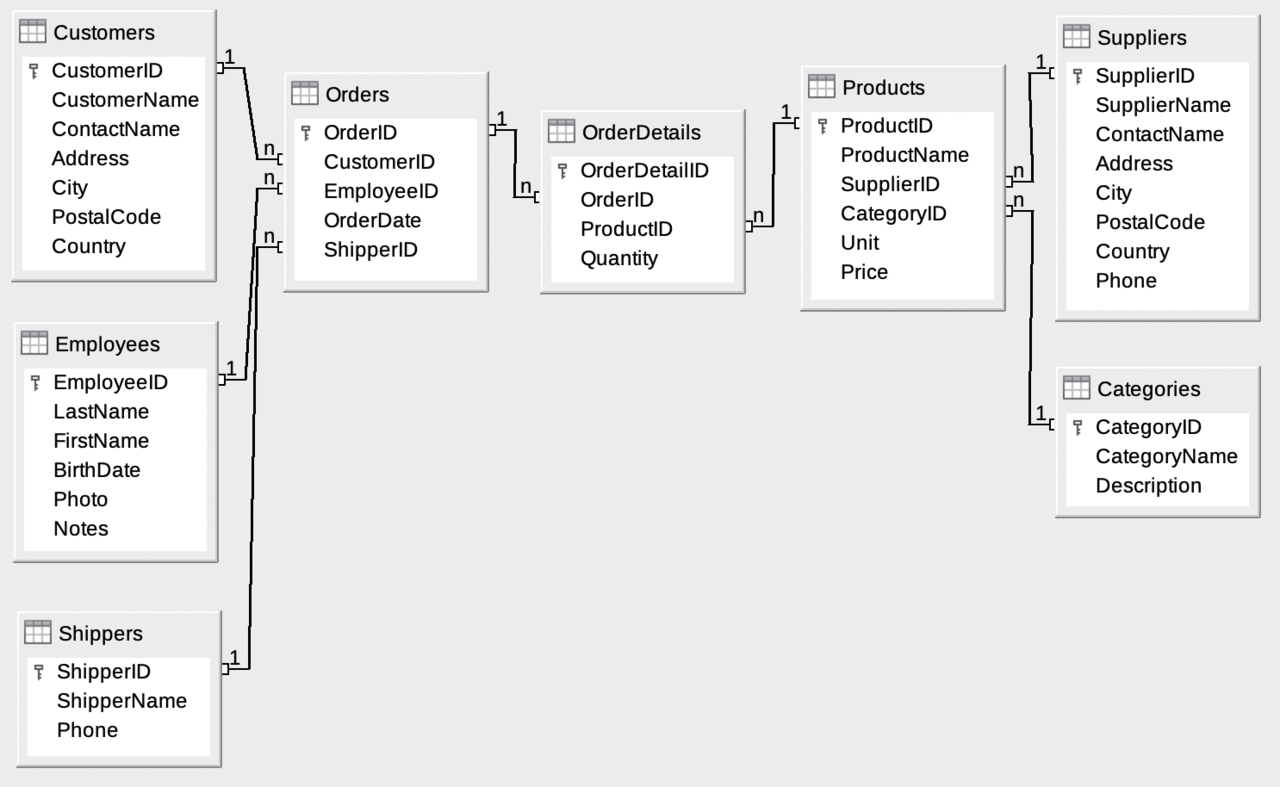SQL INSERT INTO Statement
The INSERT INTO statement is used to insert new records in a table.
|
|
INSERT INTO table-name
[ ( list-of-column-names ) ] VALUES ( data-items );
SQL> INSERT INTO student VALUES (
2 '1', 'Jones', 'Allan', 2, '555-1234' );
|
|
It is possible to write the INSERT INTO statement in two ways:
|
|
INSERT INTO table VALUES ( value1, value2, .... );
|
INSERT INTO table ( col1, col2, col3, ... )
VALUES ( value1, value2, .... );
|
|
- The first form does not specify the column names where the data will be inserted, only their values.
- The second form specifies both the column names and the values to be inserted.
The following empty table person was created by the previous CREATE TABLE statement:
| person_id |
last_name |
first_name |
address |
city |
| |
|
|
|
|
Insert three persons into the table
person:
INSERT INTO person VALUES (1, 'Hansen', 'Ola', 'Timoteivn 10', 'Sandnes');
INSERT INTO person VALUES (2, 'Svendson', 'Tove', 'Borgvn 23', 'Sandnes');
INSERT INTO person VALUES (3, 'Pettersen', 'Kari', 'Storgt 20', 'Stavanger');
|
The table
person now becomes the following:
| person_id |
last_name |
first_name |
address |
city |
| 1 |
Hansen |
Ola |
Timoteivn 10 |
Sandnes |
| 2 |
Svendson |
Tove |
Borgvn 23 |
Sandnes |
| 3 |
Pettersen |
Kari |
Storgt 20 |
Stavanger |
The values of the respective tuple are the data items separated by commas.
If new values are to be entered for certain attributes but not for all, the respective columns must be indicated explicitly; the remaining columns are filled with null values.
Demonstration
Below is an SQL test area from W3Schools, which uses the well-known Northwind sample database.
The tables here are for read only because of the problem of embedding the scripts.
For a fully working example, check this by using Chrome.

|
|
The Database includes:
| Tablename | Record |
|---|
| Customers | 91 |
| Categories | 8 |
| Employees | 10 |
| OrderDetails | 518 |
| Orders | 196 |
| Products | 77 |
| Shippers | 3 |
| Suppliers | 29 |
|
This SQL-Statement is not supported in the WebSQL Database.
The example still works, because it uses a modified version of SQL.
Your browser does not support WebSQL.
Your are now using a light-version of the Try-SQL Editor, with a read-only Database.
If you switch to a browser with WebSQL support, you can try any SQL statement, and play with the Database as much as you like. The Database can also be restored at any time.
Our Try-SQL Editor uses WebSQL to demonstrate SQL.
A Database-object is created in your browser, for testing purposes.
You can try any SQL statement, and play with the Database as much as you like. The Database can be restored at any time, simply by clicking the "Restore Database" button.
W3C WebSQL
WebSQL stores a Database locally, on the user’s computer. Each user gets their own Database object.
WebSQL Browser Support
WebSQL is supported in Chrome, Safari, and Opera.
If you use another browser you will still be able to use our Try SQL Editor, but a different version, using a server-based ASP application, with a read-only Access Database, where users are not allowed to make any changes to the data.
